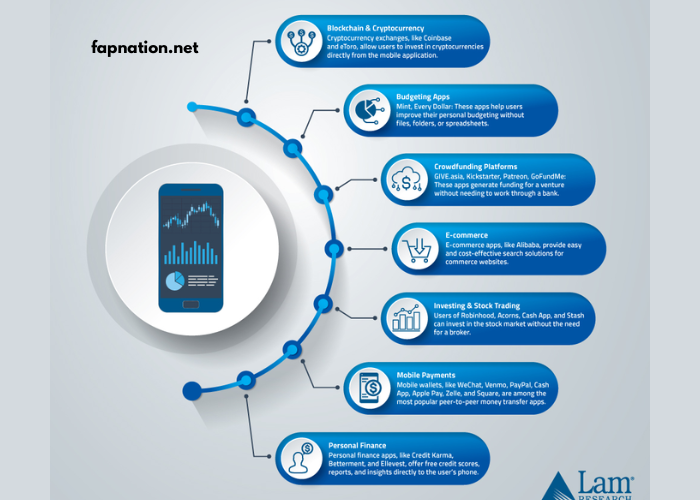Investing is a key aspect of personal finance that has the potential to significantly enhance your financial situation over time. However, navigating the world of investments can seem overwhelming, especially for beginners. This guide aims to provide a comprehensive overview of investments, their types, benefits, risks, and how they contribute to financial growth.
The Importance of Investments in Financial Growth
Investing is a long-term strategy that allows individuals to grow their wealth and achieve financial goals, such as buying a home, funding education, or securing retirement. Unlike saving money, which typically involves putting funds into low-interest accounts, investing offers the potential for higher returns by allocating capital to various assets.
Why Should You Invest?
The primary motivation for investing is to build wealth over time. However, there are several additional reasons why people choose to invest:
- Beating Inflation: Over time, inflation erodes the purchasing power of your money. By investing in assets that grow in value, such as stocks or real estate, you can outpace inflation and preserve your wealth.
- Financial Independence: Through strategic investments, you can create multiple streams of income that may allow you to achieve financial independence and reduce reliance on earned income.
- Retirement Planning: Investments, particularly in retirement accounts like 401(k)s or IRAs, help ensure you have enough funds to live comfortably after retiring.
Types of Investments
There are various investment vehicles that individuals can consider. Each type has its own set of characteristics, risk factors, and potential returns.
1. Stocks (Equities)
Stocks represent ownership in a company. When you purchase stock, you own a small portion of that company. The value of your investment can fluctuate based on the company’s performance, market trends, and economic conditions.
Benefits of Stocks:
- High Growth Potential: Historically, stocks have provided higher returns compared to other investments.
- Dividend Income: Some stocks pay dividends, offering regular income in addition to capital gains.
Risks:
- Market Volatility: Stock prices can be highly volatile and fluctuate unpredictably.
- Company-Specific Risks: Poor company performance or bad management can negatively affect stock prices.
2. Bonds
Bonds are debt instruments where you lend money to a government, corporation, or other entity in exchange for periodic interest payments and the return of the principal at maturity. Bonds are considered safer investments compared to stocks.
Benefits of Bonds:
- Steady Income: Bonds pay regular interest, making them attractive for income-seeking investors.
- Lower Risk: Government bonds, in particular, are considered low-risk investments.
Risks:
- Interest Rate Risk: Bond prices are inversely related to interest rates. When interest rates rise, bond prices fall.
- Credit Risk: If the issuer of a bond defaults, you may not receive your interest payments or the principal back.
3. Real Estate
Investing in real estate involves purchasing property—either residential or commercial—with the expectation of generating income or appreciating in value over time.
Benefits of Real Estate:
- Tangible Asset: Unlike stocks and bonds, real estate is a physical asset that you can see and touch.
- Income Generation: Rental properties provide steady cash flow.
Risks:
- Illiquidity: Real estate is not as liquid as stocks, meaning it can be harder to sell quickly if you need cash.
- Market Fluctuations: Property values can decrease based on economic conditions or local market trends.
4. Mutual Funds
Mutual funds pool money from multiple investors to invest in a diversified portfolio of stocks, bonds, or other assets. Professional managers oversee the investments, aiming to achieve a balanced return.
Benefits of Mutual Funds:
- Diversification: Mutual funds provide instant diversification, spreading risk across various assets.
- Professional Management: Fund managers are experienced professionals who handle the investment decisions.
Risks:
- Management Fees: Most mutual funds charge annual management fees, which can reduce returns.
- Market Risk: Like all investments, mutual funds are subject to market risk, which can lead to losses.
5. Exchange-Traded Funds (ETFs)
ETFs are similar to mutual funds but trade on exchanges like stocks. They typically track an index, such as the S&P 500, and offer low expense ratios and high liquidity.
Benefits of ETFs:
- Low Fees: ETFs often have lower fees compared to mutual funds.
- Liquidity: Since ETFs are traded like stocks, they can be bought and sold throughout the trading day.
Risks:
- Market Volatility: While ETFs provide diversification, they are still subject to market fluctuations.
- Tracking Error: Sometimes, ETFs do not perfectly track their underlying index, which can lead to discrepancies in returns.
6. Commodities
Commodities are physical assets such as gold, silver, oil, or agricultural products. Investing in commodities typically involves trading futures contracts or purchasing ETFs that track commodity prices.
Benefits of Commodities:
- Hedge Against Inflation: Commodities like gold tend to perform well during inflationary periods.
- Diversification: Commodities can be a good way to diversify a portfolio, as they often have a low correlation with stocks and bonds.
Risks:
- Price Volatility: Commodities can be highly volatile due to supply and demand factors, geopolitical events, and other global influences.
- Complexity: Commodities trading can be complex and may require specialized knowledge.
7. Cryptocurrencies
Cryptocurrencies like Bitcoin and Ethereum have emerged as a popular alternative investment. These digital currencies are decentralized and rely on blockchain technology for secure transactions.
Benefits of Cryptocurrencies:
- High Potential for Returns: Cryptocurrencies have shown significant price appreciation in a short period.
- Decentralization: Cryptocurrencies are not controlled by central authorities, such as banks or governments.
Risks:
- Volatility: Cryptocurrencies are notoriously volatile and can experience massive swings in value.
- Regulatory Risk: The regulatory environment surrounding cryptocurrencies is still evolving and can impact their value.
How to Get Started with Investments
Starting your investment journey may seem daunting, but breaking it down into simple steps can help make the process more manageable.
1. Set Clear Financial Goals
Before you invest, it’s important to identify your financial goals. Are you investing for retirement? A down payment on a house? Or to grow your wealth over the long term? Having clear objectives will guide your investment decisions.
2. Understand Your Risk Tolerance
Risk tolerance refers to your ability and willingness to endure market fluctuations. Investments like stocks can offer high returns but are also riskier. On the other hand, bonds and savings accounts are more stable but offer lower returns. Assess your comfort level with risk to help choose the right investments.
3. Start with Diversification
Diversification is a strategy that involves spreading your investments across different asset classes to reduce risk. A diversified portfolio may include a mix of stocks, bonds, real estate, and other assets. This strategy helps protect against market downturns.
4. Research and Educate Yourself
Stay informed about the different types of investments, market trends, and economic conditions. Continuous learning will help you make smarter investment decisions and adapt to changes in the market.
5. Consult a Financial Advisor
If you’re unsure where to start, consulting a certified financial advisor can be a wise decision. They can help assess your financial situation, risk tolerance, and goals, and recommend an investment strategy tailored to your needs.
The Risks of Investing
While investing offers the potential for high returns, it also carries inherent risks. Understanding these risks is crucial for making informed decisions.
Market Risk
Market risk refers to the possibility that the entire market or a particular asset class will decline in value. This can happen due to economic downturns, changes in interest rates, or geopolitical events. Diversifying your portfolio can help mitigate this risk.
Credit Risk
Credit risk is the risk that a bond issuer or other debtor will default on their payments. Investing in bonds or other debt securities exposes you to this risk, especially if the issuer has a low credit rating.
Liquidity Risk
Liquidity risk refers to the difficulty of selling an asset quickly without affecting its price. Real estate and certain types of bonds may have low liquidity compared to stocks or ETFs.
Inflation Risk
Inflation erodes the purchasing power of your money over time. To protect against this, you may want to invest in assets that tend to outpace inflation, such as stocks, real estate, or commodities.
Conclusion: The Path to Financial Growth
Investing is a powerful tool for building wealth and securing your financial future. By understanding the different types of investments, their benefits and risks, and how to develop a solid investment strategy, you can take control of your financial growth. Whether you’re just starting or looking to refine your approach, the key to successful investing lies in informed decision-making, diversification, and long-term planning. Always be patient and stay committed to your goals, and your investments will likely reward you over time.



